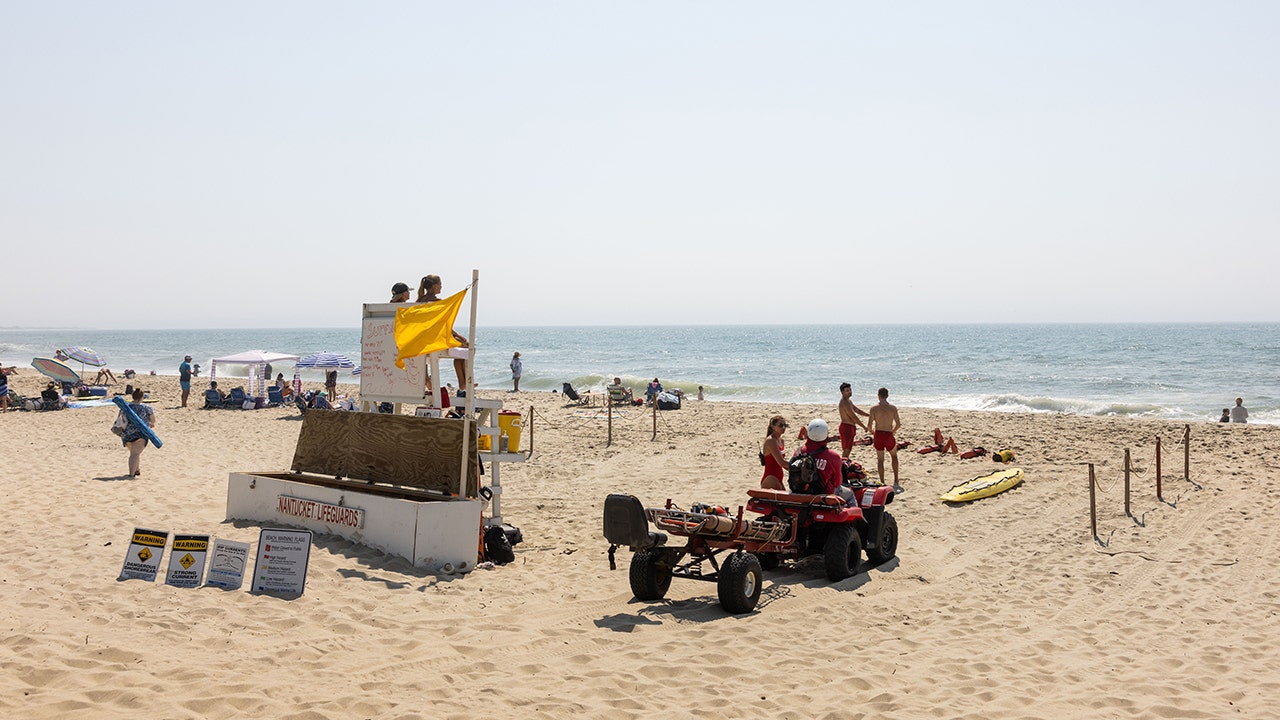The Atlantic Ocean’s apex predator has once again made its presence known. ‘Contender,’ a record-breaking great white shark, has been tracked near the popular tourist destination of Nantucket, Massachusetts. This news has sparked both fascination and concern among locals and visitors alike. Understanding the behavior and migration patterns of these magnificent creatures is crucial for ensuring public safety and promoting coexistence.
This article will delve into the details of Contender’s journey, the research efforts of organizations like Ocearch, and practical tips for staying safe in areas where great white sharks may be present. By examining the data and expert insights, we aim to provide a balanced perspective on the presence of these sharks and empower individuals to make informed decisions when enjoying coastal waters.
Contender: A Shark of Record-Breaking Size
Contender is not your average great white. Measuring nearly 14 feet in length and weighing an estimated 1,653 pounds, he is the largest great white shark ever tagged in the Atlantic Ocean by Ocearch. Tagged initially near the Florida-Georgia line in January, Contender has traveled over 1,000 miles, providing valuable data to researchers studying shark migration patterns.
Dr. Harley Newton, chief scientist at OCEARCH, emphasized the significance of tracking sharks like Contender, stating, ‘The data we collect from these animals helps us understand their movements, feeding habits, and overall health.’ This information is essential for effective conservation efforts and for mitigating potential conflicts between humans and sharks.
Nantucket: A Summer Hotspot for Sharks and Humans
Nantucket, located approximately 100 miles south of Boston and 30 miles from Cape Cod, is a renowned summer destination known for its beautiful beaches and vibrant coastal culture. However, its location also places it within the migratory range of great white sharks, particularly during the warmer months when they move north in search of prey-rich waters.
The presence of great white sharks in the waters off Nantucket is not new, but the tracking of a shark as large as Contender has heightened awareness. Local authorities are working to educate the public and implement safety measures to ensure that beachgoers can enjoy the ocean responsibly. According to the Nantucket Police Department, ‘We are working closely with marine researchers to monitor shark activity and provide timely information to the public.’
How Shark Tracking Works
The technology used to track great white sharks like Contender relies on a combination of satellite tagging and sophisticated tracking systems. When a tagged shark’s dorsal fin breaks the surface of the water, the tracking device sends a signal to an Argos satellite, which records the shark’s location. This detection, or ‘ping,’ is then relayed to OCEARCH’s tracking system, allowing researchers to monitor the shark’s movements in real-time.
For a ping to register, several conditions must be met. First, the shark’s dorsal fin must break the water’s surface. Second, an Argos satellite must be within range to record the signal. These factors can influence the frequency and accuracy of the tracking data, but the overall system provides invaluable insights into shark behavior and migration.
Staying Safe in Shark Territory
While the presence of great white sharks in coastal waters is a natural phenomenon, it’s essential to take precautions to minimize the risk of encounters. Here are some practical tips for staying safe in shark territory:
- Avoid swimming alone, especially at dawn or dusk.
- Stay close to shore and avoid venturing too far out into the water.
- Do not swim in areas where seals are present, as they are a primary food source for great white sharks.
- Avoid wearing shiny jewelry or bright clothing, as these can attract sharks.
- Be aware of your surroundings and heed any warnings or advisories issued by local authorities.
By following these simple guidelines, beachgoers can significantly reduce their risk of encountering a shark and enjoy the ocean responsibly.
Following Contender’s Journey
Fans and researchers alike can follow Contender’s journey, along with other tracked sharks, in real-time through the OCEARCH Shark Tracker. This online platform provides a wealth of information about shark movements, research efforts, and conservation initiatives. By staying informed and engaged, individuals can contribute to a greater understanding of these magnificent creatures and their role in the marine ecosystem.
Coexisting with Great White Sharks
The tracking of Contender near Nantucket serves as a reminder of the wildness that still exists in our oceans and the importance of respecting marine life. While the presence of great white sharks may raise concerns, it also presents an opportunity to learn more about these fascinating creatures and develop strategies for coexistence. By combining scientific research, public education, and responsible behavior, we can ensure that both humans and sharks can thrive in coastal environments.
As Contender continues his journey, his movements will undoubtedly provide further insights into the lives of great white sharks and the complex dynamics of the Atlantic Ocean. By staying informed and taking appropriate precautions, we can continue to enjoy the beauty and wonder of our coastal waters while minimizing the risk of encounters with these apex predators.

Leave a Reply